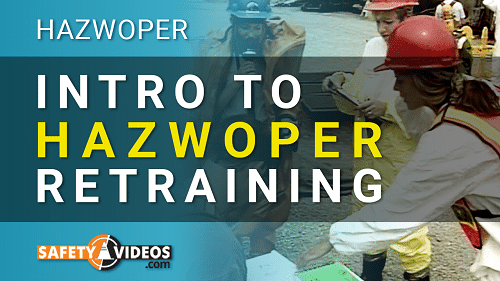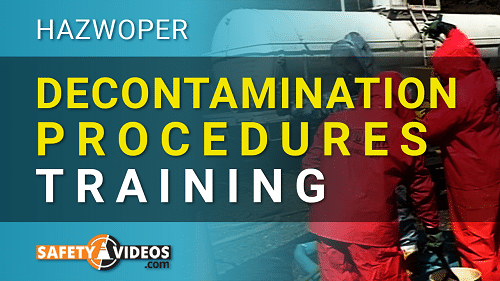HAZWOPER Respiratory Protection Training
$239

If your HAZWOPER workers need training on Respiratory Protection then this kit is for you. As you know, hazardous materials environments often have materials that require respirators, SCBA, or other breathing apparatus. That’s why training your staff on respiratory protection is so important.
This HAZWOPER Respiratory Protection Training Covers:
- What does OSHA’s HAZWOPER Standard say about the need for respiratory protection?
- What does contaminated air do to the human body? (It can damage your internal organs like your liver or kidneys, and can also burn your throat and lungs)
- What are the HAZWOPER training requirements for respirators?
- What are pressurized cabs and how are they used in a HAZWOPER environment?
- After cleared by a medical professional, how do you choose the type of respirator to use for the hazardous conditions being worked with?
- What are the three basic types of respirators?
- One that purify the air by using chemicals
- Ones that filter the air that is breathed
- Ones that provide their own source of air like SCBA units
- What are the “Assigned Protection Factors” or APF’s as outlined by OSHA?
- What is the role of disposable masks at a Hazardous Waste Operations work site?
- How does the NIOSH classification system work?
- What role do respirators play as part of any HAZMAT training?
- What are the “P,” “R,” or “N” codes for respirators and what do they each mean?
- P is used when the air contains oil-aerosols, these are oil-proof
- R is used for oil-resistant
- N is used for “not oil-proof”
- What are the respirator efficiency percentages and how do they work?
- How and when to use pre-filters on your respirator
- How and when to use a full face mask respirator
Other Important Topics Covered in this HAZWOPER Respirator Training:
- What are the two types of air supplying respirators and what are the advantages and disadvantages of each?
- There are Supplied Air Respirators or SARs that are attached to a long hose and air is sent through the hose
- There are also Self Contained Breathing Apparatuses or SCBAs which allow the user to carry their own supply of oxygen through a tank on the employee’s back
- What are some of the problems that occur when using a SCBA?
- They have a limited supply of air, usually 30 to 40 minutes or so
- The supply is clean air is also limited by the amount you weigh as heavier people use more air
- The tanks are heavy so they make the work more strenuous
- Tanks need to be maintained and checked very carefully before use
- How to check your respirator before you begin your work day
- What are the factors to consider when you delve into respirator selection? Which respirator is best for what type of situation?
- How to properly maintain and store your respirator
- What are the two types of test for an OSHA required formal fit tests?
- There is a qualitative test
- There is also a quantitative test
- How often do you need to check the respirator’s fit on your face? (Each and every time use put it on)
- How do NIOSH approved respirator modification kits work for those employees that wear eyeglasses?
- What is the role of Personal Protective Equipment or PPE respirators when working with hazardous materials?
- How to inspect a respirator before use:
- Inspect the respirator for any signs of wear, tear or damage
- Looks for holes where hazardous materials or bad air could leak in
- Take a look at the seals and the straps
- How to determine when a respirator is faulty and should be discarded
- and much more…
In a hazardous materials work site, teaching your employees how to properly use a respirator can reduce the possibility of accidents or injuries. Get your employees the training they need with this HAZWOPER Respiratory Protection Training program. Available in either English or Spanish language, the training comes on either a DVD or on a USB Stick.
Full-Length Preview of the HAZWOPER Respiratory Protection Training Video:
Add a review

Your review
* Review is required
Name
* Name is required
Email
* Email is required







Reviews
There are no reviews yet